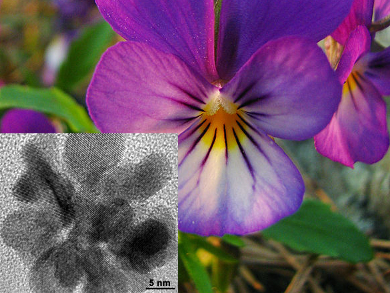Graphene decorated with flower-like platinum nanostructures is a highly active catalyst. Liang Wang, Changchun Institute of Applied Chemistry, Chinese Academy of Sciences, and colleagues have developed an efficient strategy to synthesize nanoflowers on polydopamine-modified graphene. Polydopamine acts as reducing agent as well as cross linker between the platinum nanoflowers and graphene, and the synthesis is free of additional reducing agents, seeds, surfactants, and organic solvents. The nanoflowers are spatially and locally separated on the graphene surface and do not aggregate.
The prepared nanomaterials exhibit excellent electrocatalytic activities and stabilities in the direct methanol fuel cell anodic reaction (methanol oxidation) and cathodic reaction (oxygen reduction). The developed synthesis holds promise for the design of platinum catalysts for electrochemical energy devices.
- Self-Assembled Platinum Nanoflowers on Polydopamine-Coated Reduced Graphene Oxide for Methanol Oxidation and Oxygen Reduction Reactions,
Xueqing Yu, Huan Wang, Liping Guo, Liang Wang,
Chem. Asian J. 2014.
DOI: 10.1002/asia.201402883




